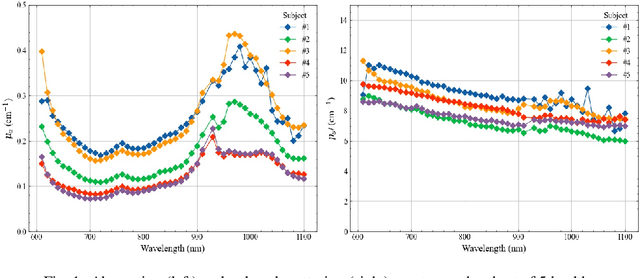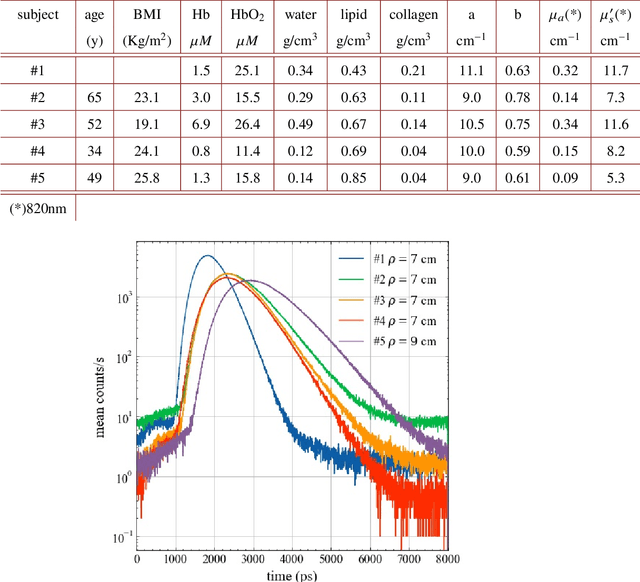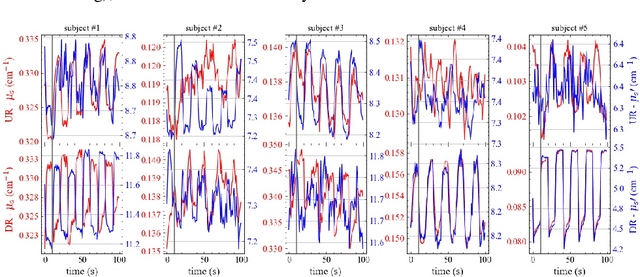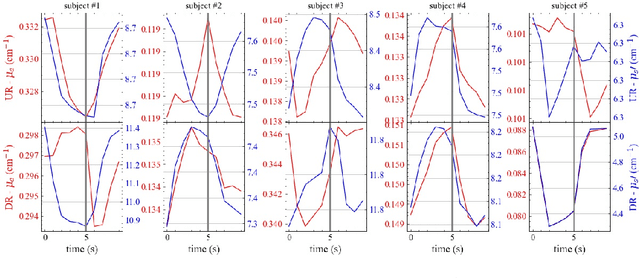Initial non-invasive in vivo sensing of the lung using time domain diffuse optics
Paper and Code
May 17, 2022



Non-invasive in vivo sensing of the lung with light would help diagnose and monitor pulmonary disorders (caused by e.g. COVID-19, emphysema, immature lung tissue in infants). We investigated the possibility to probe the lung with time domain diffuse optics, taking advantage of the increased depth (few cm) reached by photons detected after a long (few ns) propagation time. An initial study on 5 healthy volunteers included time-resolved broadband diffuse optical spectroscopy measurements at 3 cm source-detector distance over the 600-1100 nm range, and long-distance (6-9 cm) measurements at 820 nm performed during a breathing protocol. The interpretation of the in vivo data with a simplified homogeneous model yielded a maximum probing depth of 2.6-3.9 cm, suitable to reach the lung. Also, signal changes related to the inspiration act were observed, especially at high photon propagation times. Yet, intra- and inter-subject variability and inconsistencies, possibly alluring to competing scattering and absorption effects, prevented a simple interpretation. Aspects to be further investigated to gain a deeper insight are discussed.
 Add to Chrome
Add to Chrome Add to Firefox
Add to Firefox Add to Edge
Add to Edge